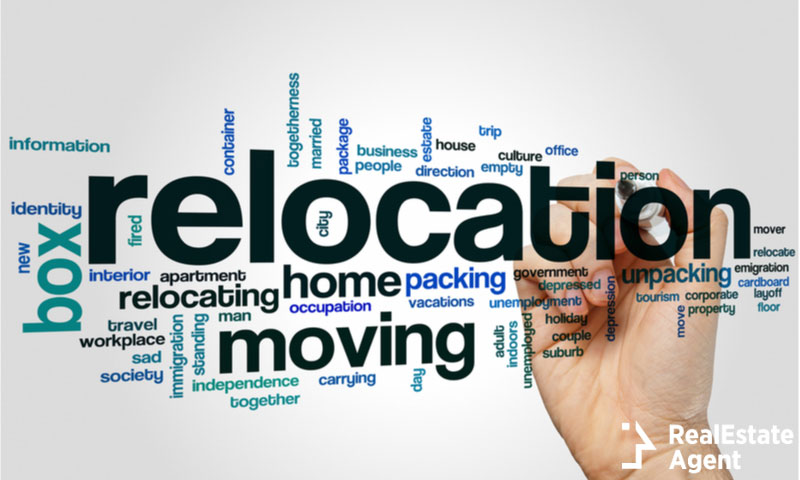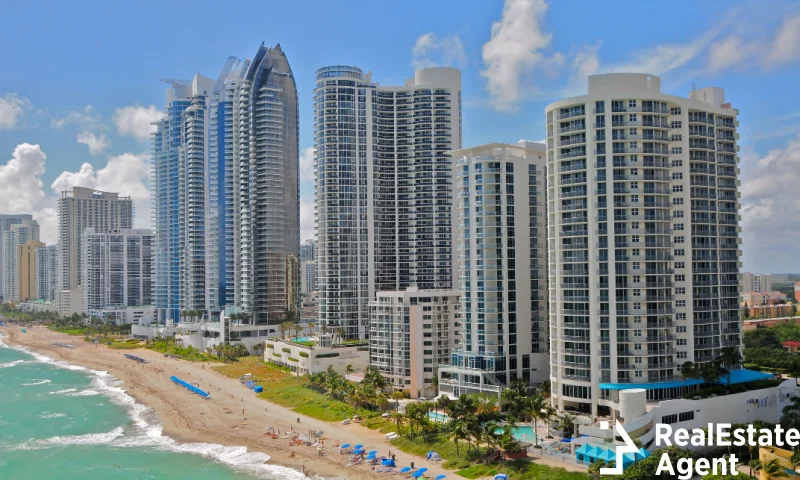Throughout its existence, the United States has known many trends in citizens’ relocation patterns. Being the land of opportunities, Americans enjoyed the freedom of movement to pursue happiness and financial improvement. Statistics highlight that, on average, 31 million US residents relocate every year.
Article Summary:
- Why do Americans change their location?
- Trivia: Relocations in numbers
- 2020-2021: global pandemic and lockdown are dictating the trends
- Moving trends defined by the economy in 2021
- Trendy cities for relocation
Why do Americans change their location?
Have you ever thought about the perfect timing to sell your house? Americans have always assumed a flexible attitude, more so than other nations, when it comes to changing homes. In this article, we set out to consider the countless factors contributing to relocation. Critical historical events, most notably the American Revolutionary War, the California Gold Rush, the Civil War, and the Jim Crow laws, had a decisive part in establishing when and in which direction to move.
While nowadays, above all, socio-economic trends, such as gentrification-dislocation, and sanitation crisis, more precisely, the global pandemic and the fear of another quarantine, trigger Americans to move to other cities. All of the mentioned above made a substantial impact on the national relocation trends.
Trivia: Relocations in numbers
- US citizens move 11.7 times during their lifetime.
- According to 2020 census data, approximately 31 million Americans relocated the previous year, 9.8% of all US residents moving every year. In other words, it is the lowest number since 1948, according to the National Census Bureau.
- Approximately 3 million people move interstate-wise each year.
- The number of relocations is declining. People moved twice as much in 1960 as they did in the late 2010s.
- May and August is the year’s busiest period for moving; since 60% of relocations occur during summer. At the same time, December and January are the least beloved periods to relocate in the US.
- The expenses for an interstate move cost $4,100 on average, while in-state relocations cost just about $1,000.
- More renters (21.7%) move more than homeowners (5.5%), according to 2017 statistics.
- Not only entire households move (44%) but the corporate staff (38%), military personnel (16%), and government agencies (2%) too.
- Only twenty percent of millennials moved in 2020 despite having no social bounds, such as marriage, children, or homeownership. Besides, they are pretty picky when moving to a city where millennials can afford a property.
2020-2021: global pandemic and lockdown are dictating the trends
The outbreak of the Coronavirus pandemic left everyone bewildered. In the lack of proper medical treatment, authorities had to opt for extreme measures by introducing the general lockdown nationwide. Spatial restrictions, social distancing, remote work were all buzzwords we became familiar with overnight. The pandemic’s most abysmal aspect was the closeness of another economic recess in various US areas.
Americans took their freedom of movement limitations personally and decided to relocate to more spacious regions, such as suburbs and small towns. So, they could enjoy a more substantial free space, better living conditions, and could work online in their convenient home office. Therefore, the real estate business began to thrive in small-town America like seldom before. Show Low, Arizona, Cary, North Carolina, and Fort Lauderdale, Florida, were among the many booming housing markets during the pandemic. Thus they turned into popular destinations for house-hunters in 2020.
Now that the COVID-vaccines are here and have become widespread throughout the nation, many real estate agents speculate that most newly relocated people to the suburbia would return to their original habitat, the metropolitan area. The housing market in great cities seems to be reinvigorated; the job market is picking up. More diverse positions for job-hunters are at hand now. Hence, we are looking ahead to another substantial shift in the US demographics.
Moving trends defined by the economy in 2021
The shifting economy is still a major force to reckon with. As opposed to the 35% of Americans moving in 2020, analysts expect a significant increase in their number to 56% this year. We’re not over the financial halt the pandemic dragged us into. Although specialists have already put a plan for a general recovery in motion, some economists have expressed their reservations. “The foundations to this recovery are cracking under the weight of a mismanaged health crisis,” claimed Gregory Daco, chief U.S. economist at Oxford Economics (Source: cbsnews.com).
In addition, several large-employee companies continue with the unpopular trend of layoffs on a massive scale. For instance, Schlumberger, a significant oilfield corporation, discharged 21,000 workers. Subsequently, unemployment rises, with approximately 2.5 million US workers applying for unemployment assistance in July 2021. Most US citizens receive jobless aid in such states as California and Georgia. No wonder, that many strive to relocate from regions with high unemployment rates to states with more job opportunities and better-paying jobs.
Trendy cities for relocation
We looked at the states that had the highest growth in 2020. Americans were flocking to states that provided pandemic-related advantages and lower cost of living. Besides, they showed tendencies to draw in new house-hunters even in 2021 successfully.
The Sun Belt triumphs as the most beloved relocation center
According to April 2021 statistics compiled by Zillow and based on 2020 national relocation data, the Sun Belt (the geographical region stretching across the Southeast and Southwest parts of the United States) climbs to the top of the trendiest relocation destinations. Real estate agents in Charlotte and Phoenix, AZ, along with realtors in Austin TX saw tremendous demand for renewed housing opportunities; therefore enjoyed a massive upheaval in their business. States in the Sun Belt continue to grow in 2021. Speaking of which, Texas was another winner in terms of successful real estate market closings. Their real estate market will not show weakness anytime soon.
In addition, we can observe that more people moved into a Western state than left them. At the same time, in the Midwest, precisely the opposite phenomenon happened. On the Eastern Coast, Florida is one of those successful states relocation-wise, where almost every county enjoyed the same amount of inbound moves.
Arizona
Arizona came out like a true champ with impressive numbers in terms of population growth. Phoenix, Scottsdale, and Chandler became top destinations due to their warm weather and excellent variety of outdoor activities.
Colorado
The fascination with the Centennial State also increased during the lockdown. Boulder, Steamboat Springs, and Breckenridge in Colorado provided house-hunters with stunning surroundings amidst jaw-dropping mountain views. The state excels in plenty of work opportunities and moderate temperatures. It also features abundant outdoor recreational activities at Rocky Mountain National Park, Garden of the Gods, and the Maroon Bells Scenic Area to mention only the most popular ones.
Idaho
People who want to get away from the big cities can’t get enough of what Idaho has to offer. In 2020, the “Gem State” had nearly three times as many folks migrate in than out. The craze around Idaho is due to its relatively low cost of living (7.8 percent lower than the US average). It’s also one of the least densely populated states in the US, allowing for the newly arrived plenty of space to feel privacy. No worries here to practice social distancing! Craters of the Moon National Monument and Preserve, Sawtooth National Recreation Area, and Shoshone Falls are just a few of Idaho’s many attractions.
If you are intrigued by the countless possibilities, find your “own private Idaho” with the help of real estate agents in Boise ID!
Texas
Hard and rugged, yet there’s still something attractive in the heart of the Lone Star State. What other state to choose for more space than Texas? Besides Austin, Dallas and Houston also experienced a significant surge in their population during the pandemic. The best places to visit in Texas and a dynamically growing local economy convinced newcomers to give the Lone Star a chance. And Texas delivered!
Where are people moving away from in the US?
Outbound moves affected primarily expensive housing markets in the largest and most lived-in metropolitan areas. People moved in great numbers from New York, Los Angeles, San Francisco, and Chicago. And let’s stop here and focus on the Golden State. Napa County, Santa Cruz County, and San Francisco County became notably negative examples, with many locals moving out during the pandemic.
Unfortunately, the City of New York didn’t do particularly well either. Of course, we can’t speak about New York’s total desolation; still, about 333,000 residents leaving the Big Apple in favor of surrounding suburbs may come as a minor shock, regardless of the current situation. Former New York residents moved to New Jersey (about 54,00), Florida (about 31,200), and Connecticut (23,400). Lastly, we have a telling piece of statistics saying that more than 100,000 New Yorkers relocated upstate or chose Long Island. Moreover, house sales in these smaller surrounding neighborhoods grew by 44%. These two pieces of information might reveal the New Yorkers’ intent to return once to their original homes.
Here’s a list of US states experiencing the highest percentage of outbound relocations, based on Realtor Magazine statistics:
- New York (66%)
- Illinois (62.5%)
- New Jersey (60.5%)
- Louisiana (60%)
- West Virginia (60.1%)
- Nebraska (58%)
- Minnesota (57.9%)
- Indiana (57.8%)
- California (57.1%)
- Iowa (56.1%)
Conclusion
We experience an essential change in people’s attitude towards relocation. Affordable living, remote work opportunities, relocation to less-crowded regions became priorities.
Alternate living conditions, such as mini homes, ranches, and gated communities, became popular ways of thriving, granting people less densely populated areas or a heightened sense of social security.
The period defined by the global pandemic is a genuinely fascinating one real estate market-wise. The housing market experienced many ups and downs. As a result, we are looking forward to seeing the official 2021 statistics at the end of the year!
Did you also relocate during the last two years? Did the new city meet your expectations? Please share your opinion on your relocation experiences in the comment section below! If you liked this article, give it a big thumbs up, and share it with your friends on your social media!














